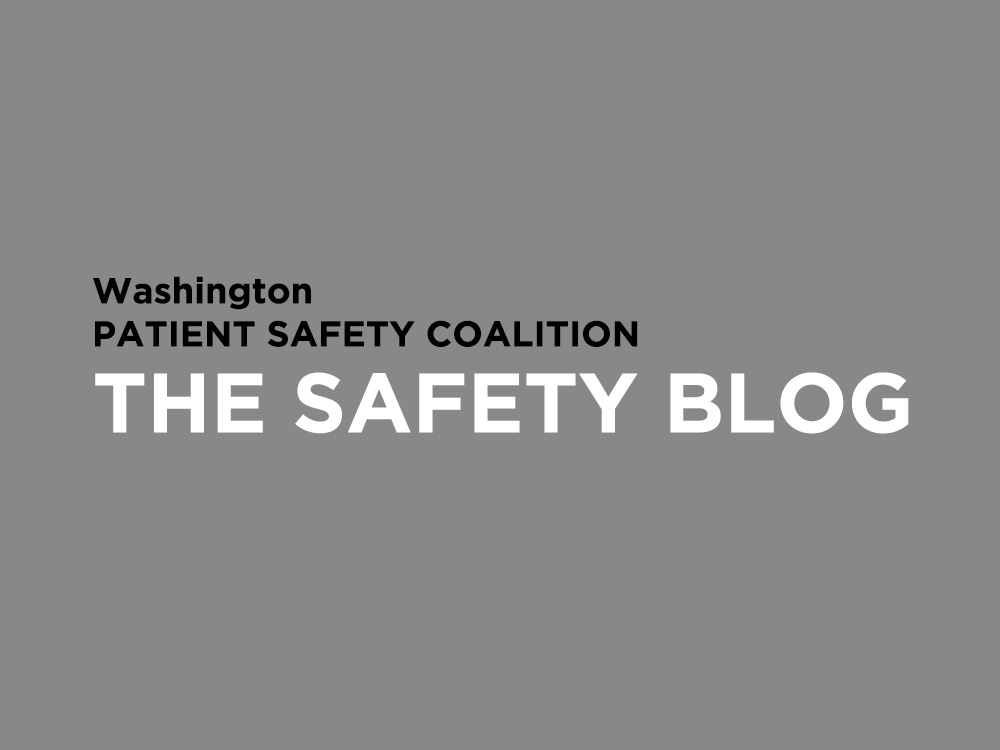- FHCQ Foundation for Health Care Quality
- COAP Care Outcomes Assessment Program
- Spine COAP Care Outcomes Assessment Program
- SCOAP Care Outcomes Assessment Program
- OBCOAP Care Outcomes Assessment Program
- CBDR
- Smooth Transitions
- WPSC Patient Safety Coalition
- Bree Collaborative Bree Collaborative
- Health Equity Health Equity
- Admin Simp
- Contact Us
Once more, with feeling… On being a passenger on the way to the NPSF Congress

Once more, with feeling… On being a passenger on the way to the NPSF Congress
[two_third]Last week I attended the NPSF Congress for the second time and once again had significant dissonance: it’s exciting and heartening to see so many people gathered together to learn about patient safety, and to know that the Washington safety community is so advanced and innovative – and so distressing to see a conference full of interventions billed as “creative” and “innovative” that we have been doing in our state for years. I did not see or hear anything that is not being done somewhere in Washington. If you look at my first blog entry below, which started out this series, you may see some remarkably similar comments. What does that say about the patient safety community? Clearly, out here in the provincial Northwest, we are very advanced compared to the country as a whole, and doing a poor job of increasing our visibility. I think that because this is our norm, we don’t think it’s worth telling others about. I’d appreciate your help and suggestions for improving national awareness of our work. When I wrote about last year’s event, I devoted most of the blog to events related to the flight itself. This year, strangely enough, the same general theme comes to mind. I guess there really are connections between patient safety and aviation safety. Right about mid-flight, somewhere over the Midwest, we experienced a solid hour of the worst turbulence I’ve ever been in. (This was just a few days before the tornadoes, so maybe it was the pre-storm disturbance.) Surprisingly, I felt pretty safe, much more than I expected, and even dozed during part of it. OK, I admit that I was exhausted due to the conference prep, but I’d never slept during turbulence before. I think it was due to this coincidence: the day before the flight we had the ninth annual WSPC conference, and among other wonderful speakers I had the opportunity to hear Dr. Jim Bagian. Jim was the former head of patient safety for the entire VA system and really brought them into the present; he is now at the University of Michigan. One thing he described was how commercial airline pilots prepare for takeoff-related emergencies before they take off. The example he gave was that if one of the pilots sprained his leg playing golf (his example, not mine) and wouldn’t be able to do the emergency braking effectively, he tells the other pilot at that time, rather than during the emergency when there are no extra seconds to reassign the responsibility. What a concept! Having heard this less than 24 hours before my rough flight made me much more relaxed; I realize that there could be mechanical error or other issues, but I truly felt reassured that the pilots on my flight most likely had done their preparation and planning, and weren’t bringing it up for the first time during the turbulence. In addition, pilots don’t fly as established teams and often meet for the first time walking into the plane, or in the cockpit – and somehow the safety record for commercial flights keeps getting better and better. The parallels to the operating room or to any health care team are clear: take a look at a pre-procedure checklist, the time-out procedure, or any other process or tool. They are all intended to ensure that, in addition to doing the right thing (to the right person, on the correct side of the body, etc.), those involved in the procedure know who will do what and who can’t do what. I should feel just as confident and relaxed going into the OR (as a patient) as I do in heavy turbulence at 35,000 feet. Thoughts? Share with me here. Miriam Marcus-Smith, Program Director, WPSC
[/two_third]
Recent Posts
- TakeCharge This Patient Safety Awareness Week: 5 Steps to Safer Healthcare
- Stigma & Bias in Healthcare: The Obstacles, Consequences and Changes Needed
- Agility in Crisis: How The Everett Clinic responded to COVID-19
- Collaboration over Competition: How Pediatric Hospitals Can Thrive When They Work Together
- Reducing Stress for Health Professionals During the COVID-19 Pandemic

